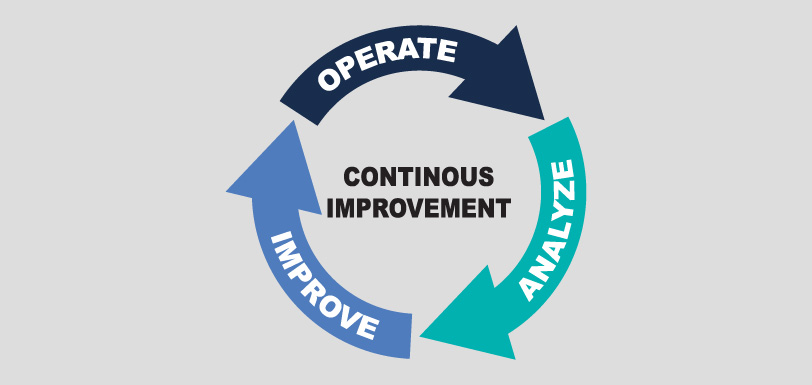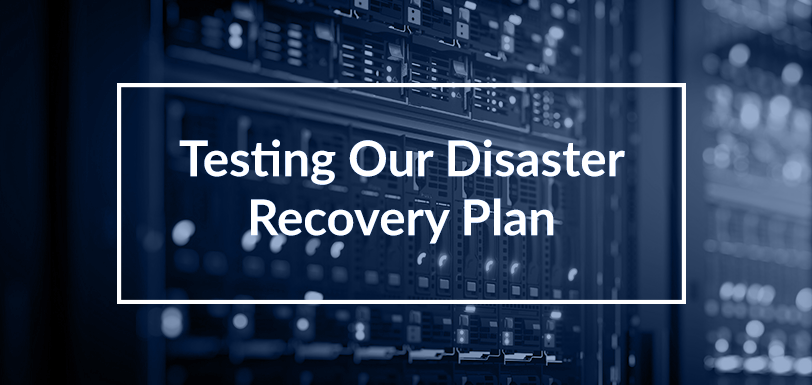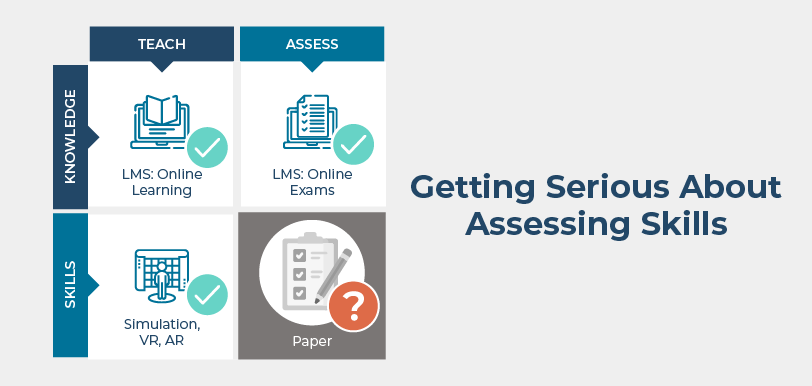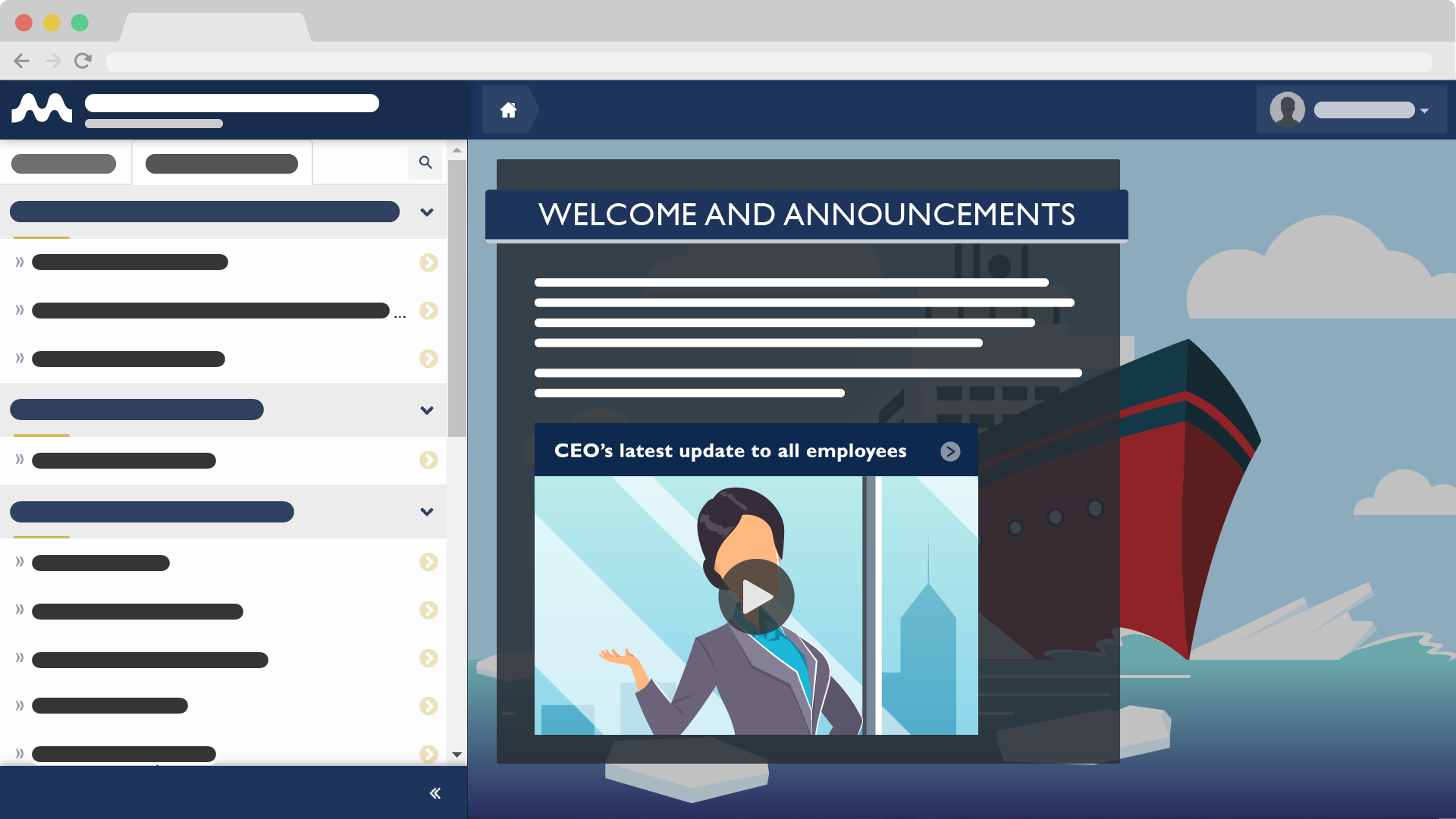Continuous Improvement in Familiarization Training
Sep 21, 2016 Marine Learning Systems 0 Continuous Improvement, Maritime TrainingIntroduction
“Continuous Improvement” (or “CI” for short) is a term we hear a lot lately, and one that I’ve written about before. Sadly, despite that, CI principles are infrequently applied to in-house job and familiarization training. This is a mistake.
First – it is neither difficult nor expensive to establish and maintain a CI program. Second – there is a good chance that if you ignore CI, not only will your training outcomes fail to improve, but they will likely deteriorate – affecting safety and operational performance. After all – if you are not applying improvement principles, you are also not likely measuring outcomes, which is a recipe for deteriorating performance.
The good news is that it is easy to begin. Even a modest program can yield significant results. The improvement in training outcomes, trainee satisfaction, safety and performance can provide a tremendous return on investment given the low cost and effort of implementation.
This series of articles is a “how to” primer for implementing continuous improvement in maritime familiarization training. Subsequent posts will provide some simple metrics and techniques that apply specifically to maritime training.
Why Now?
Before defining continuous improvement, I would like to point out that this topic is especially timely now. Vessels, equipment and job routines in the maritime industry continue to become more and more complicated and sophisticated. As a result, deeper knowledge and more specialized skills are required to operate safely.
As you may be aware, much of the new knowledge and skills are not, or cannot be, taught in mandatory certification courses. They are typically taught by vessel operators as part of their job and vessel familiarization training. However, familiarization training in most organizations has not changed much over the years. As a result there is an increasingly large gap between the training offered and the knowledge needs of modern seafarers. A program of continuous improvement for operational training is a necessary tool which helps close this gap.
What Is Continuous Improvement?
I believe most of us already have a good idea of what is meant by continuous improvement. In fact, the term “continuous improvement” defines itself pretty well. But just to briefly make sure we are all starting on the same page I will give a short definition here:
A continuous improvement process (CIP or CI) is a continuous process of reflecting on the task at hand, and then identifying and eliminating suboptimal practices in a series of incremental, rather than drastic, steps.
For safety-critical systems (one that can cause significant damage or loss of life if not done well), such as maritime operations, the primary goal of CI is to increase the effectiveness of training. Effectiveness in our context means ensuring that required knowledge and skills are learned well by every trainee. Our assessment techniques must also effectively identify those trainees who did not learn the required knowledge and skills to the level required.
Measuring and Managing
One of the cornerstones of any CI process is the measurement of effectiveness or efficiency. A mentor of mine is very fond of the saying: “If you can’t measure it, you can’t manage it”.
His point is that for any business process, including training, unless you implement a system to keep track of how well that process is functioning, there is no way to improve the process. After all, how can you determine whether the changes you’ve made improved effectiveness if you have no way to measure effectiveness in the first place? So let’s discuss measurement:
Key Performance Indicators
In order to measure something, you will need to establish a set of “Key Performance Indicators” or KPIs. They are indicators of effectiveness and efficiency which provide a measurement of “key” or important aspects of training you feel are worth optimizing.
For example, if one of your goals is to create a positive training culture in your maritime organization, then trainee satisfaction with the training process may be an important aspect to optimize. One way to measure that would be to require all trainees to fill out a course satisfaction evaluation at the end of each course. The evaluation results are then considered the KPI.
Whatever KPIs you choose, make sure that they are closely aligned with the high-level goals of your training organization. The KPIs should also measure aspects of performance that:
- Can be directly measured. Some important parts of any process are difficult or impossible to measure because data is either hard to obtain or it is difficult to isolate a particular indicator.
- You have some control over. Even if you can measure it, there may be little point if there is no easy way for you to influence the metric.
It is also wise to choose KPIs which react reasonably quickly to changes made to training practices. For example, although “days without a safety incident” is often tracked in any maritime organization, that value is not likely to change quickly with small changes in training. Therefore as a training KPI it may not be useful. Instead, have faith that if you take care of the “little” things (like lifeboat drill frequency and effectiveness) the “big” things (like overall company safety) will take care of themselves in this regard.
The Continuous Improvement Cycle
Although all CI processes agree that measurement is a key requirement, the next steps in a CI process vary subtly from process to process. There are a large number of CI “systems” such as: Deming, Six Sigma, Kaizen, and many others. However, all of the systems are variations of a continuously repeating cycle:
- Run your system for some period of time. In our case, deliver your maritime familiarization and job training for a period of time.
- Collect and analyze your KPIs.
- Propose and implement changes which you believe will improve your KPIs.
- Return to Step 1.
The Period of the Cycle
The length of time that each cycle lasts is determined by your ability to collect meaningful metrics and implement changes. Depending on the size of your organization and the number of people you train, this might be anywhere from 6 months to a year or more.
Remember, however, that CI is generally a process of making small changes. It is recommended to limit the number of changes made during any one cycle: too many changes makes it difficult to determine what affected the KPIs.
Shorter periods, as long as they allow for meaningful measurement, will also make the training process more responsive to trainee and organizational needs. Quick course corrections are then possible when a change is found to be detrimental rather than beneficial.
Meta Reviews
In addition to the steps above, it is also important to periodically do a “meta”-type review — a review to review your CI process itself. Here you would:
- Review your KPIs to make sure they capture the most important aspects. In other words: do you have the right KPIs? Should any new ones be added? Any existing ones deleted or altered?
- Review the period of your CI cycle to ensure it is neither too long nor too short.
- Review performance in implementing the changes.
- Review your overall performance in terms of how well the changes you made in the past improved the training KPIs.
By doing this you are applying the philosophy of continuous improvement not only to training, but also to the system itself.
Continuous Improvement in Maritime Training and Familiarization
The next post will turn our attention to specific techniques that can be applied to maritime training. We will look at some KPIs that are useful in this environment and how to go about gathering them.
If you would like to be notified when the next installment comes out, be sure to “Follow This Blog” below.
In the meantime, please comment on:
- the kinds of continuous improvement processes that you are using, planning to use, or believe would be useful to use and track in your maritime training organization.
- the KPIs you believe would be useful to track in maritime training.
This way we can all benefit from the experience of one another.
Follow this Blog!
Receive email notifications whenever a new maritime training article is posted. Enter your email address below:
Interested in Marine Learning Systems?
Contact us here to learn how you can upgrade your training delivery and management process to achieve superior safety and crew performance.






